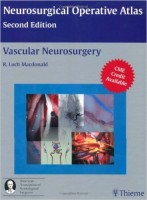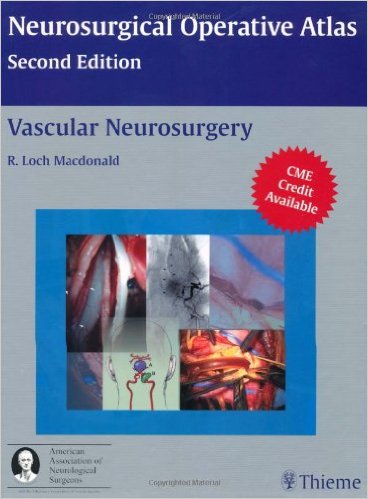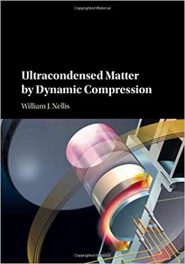 (Part of a series of five volumes. The others are: Neuro-Oncology, Spine and Peripheral Nerves, Pediatric Neurosurgery, and Functional Neurosurgery).
(Part of a series of five volumes. The others are: Neuro-Oncology, Spine and Peripheral Nerves, Pediatric Neurosurgery, and Functional Neurosurgery).
Editor: R. Loch Macdonald, MD
Publisher: Thieme – 280 pages
Book Review by: Nano Khilnani
This textbook offers a Continuing Medical Education (CME) credit by the American Association of Neurological Surgeons (AANS) to those who complete the requirements listed on page x. Thieme collaborated with that organization in publishing this work.
One hundred and two people provided the content to make this valuable volume possible. They live and work in nine other countries besides the United States. Those places are: Australia, Canada, Chile, Egypt, Germany, Ireland, Italy, Japan, and Thailand. Almost all of them are practitioners and/or professors of neurosurgery (sometimes called neurological surgery), and/or spine surgery, while a few are anesthesiologists or radiologists.
The content of this book, now in its second edition which was released in 2009, is extensive, with 38 chapters covering a wide range of subjects, from anterior communicating artery aneurysms to vertebral artery aneurysms; from arteriovenous malformations of the cerebral convexity to vein of Galen malformations; and from carotid microendarterectomy, to superficial temporal artery bypass grafting with the middle cerebral artery.
Each chapter “has been designed to teach a specific surgical technique or approach. The illustrations are part of the work, and the authors commissioned most of the drawings in color,” writes Dr. Robert Maciunas, former Chair of the AANS Publications Committee, in his Series Foreword. To give you a very brief overview, we list below the three main sections of this book, and the number of chapters each one contains:
- Aneurysms / Subarachnoid Hemorrhage : 20 chapters
- Vascular Malformations: 12 chapters
- Ischemic and Other Cerebrovascular Diseases: 6 chapters
The first edition of this book appeared in 1991. It covered the results of six operations which were released every two months in loose leaf format. “The completed series had nine volumes and covered the entire spectrum of neurosurgery,” explains Dr. Maciunas.
Then as now, the goal of the series is to provide “a ready, comprehensive reference that includes well-established neurological procedures practiced in the United States and Canada by authors who are respected in the field.” This book has been produced for global use both by trainees and practitioners of neurosurgery.
Each chapter of the book covers the following:
- Case selection
- Operative indications and contraindications
- Special points in the anesthetic technique
- A step-by-step detailed description of the operation
- Postoperative complications
What are not included are detailed discussions of diagnostic techniques, pathology, mechanisms of disease, histology, and medical management since they are outside the scope of a surgical atlas. Also not included are: detailed tables, reference lists, and statistical analysis of results because they are available in standard texts, states Dr. Macuinas.
One of the chief values of this book is the presence of numerous images, which not only provide extensive anatomical details but also numerous surgical techniques. It is true that you cannot learn how to do something merely by looking at how it is done by others, but also by actually doing it yourself. But the editor Dr. R. Loch Macdonald enlightens and gives users of this book hope and encouragement, by writing:
”Obviously one does not learn surgical procedures from a book alone, but I am confident that this volume will get the practitioner started on vascular neurosurgery and give him or her an understanding of what he or she is doing, even when assisting, and the ability to impress their senior colleagues by knowing the answers to some common questions.”
Some of the important features of this book are:
- Consistent presentation in each chapter to enhance ease of use
- Coverage of microsurgical techniques, minimally-invasive approaches, and endoscopic approaches
- Practical tips on patient positioning, instruments, and how to avoid and manage potential complications
- More than 300 illustrations, most of them in full-color, demonstrating surgical steps
Let’s look at chapter 2 – Ophthalmic Segment Aneurysms – to get an idea of the organization and type of content you will encounter in other chapters of the book. We emphasize “idea” because there are certainly variations from chapter to chapter.
- Introductory Paragraph
- Patient Selection
- Diagnostic Criteria
- Classification of Ophthalmic Aneurysms
- Indications for Surgery
- Contraindications for Surgery
- Timing of Surgery
- Alternatives to Surgery
- Risks
- Preoperative Preparation
- Operative Procedure
- Positing and Draping
- Incision and Craniotomy
- Aneurysm Dissection and Clipping
- Closure
- Postoperative Management of Complications
This is an excellent volume with a lot of detailed text and superior, full-color imaging on neurovascular surgical techniques covering three main problem areas: aneurysms and subarachnoid hemorrhage; ischemic and other cerebrovascular diseases; and vascular malformations.
Editor:
R. Loch Macdonald, MD, PhD is Professor in the Department of Surgery at the University of Toronto; and Head of the Division of Neurosurgery at St. Michael’s Hospital in Toronto, Ontario, Canada.







